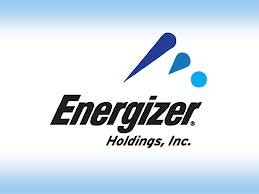Being a successful investor does not need to be that difficult. A simple investment in an easy to comprehend business model is often the best way to make long-term gains in the stock market. Sure, you can occasionally hit it big on a complicated biotech speculative pick or what have you, but simplicity is one of the keys to consistent gains in the stock market. And in the universe of publicly-traded companies, it does not get much simpler or more consistent than the consumer goods companies. Companies such as Energizer Holdings, Inc. (NYSE:ENR).
Not Your Father’s Battery Company
If you are unfamiliar with Energizer Holdings, Inc. (NYSE:ENR), I can imagine your reaction reading that opening paragraph. “Consistent long-term gains? Energizer? The company that sells 9-volt batteries? Nonsense!” Hold on for a second, because you might be surprised by the company’s performance over the last decade. That is because in the past 10-years, Energizer Holdings, Inc. (NYSE:ENR) has managed to increase its earnings per share from $1.92 in 2002 to $6.22 in 2012, with net sales jumping from about $1.74 billion to $4.567 billion.
How did Energizer accomplish that by selling only disposable batteries? That’s easy to answer. It is because they didn’t sell only disposable batteries. In 2003, Energizer Holdings, Inc. (NYSE:ENR) began the process of broadening its portfolio of products, transforming the company from merely a seller of batteries into a miniaturized version of the consumer goods conglomerate The Procter & Gamble Company (NYSE:PG).
More than Just Batteries
In 2003, Energizer acquired the Schick-Wilkinson Sword razor business from Pfizer Inc. (NYSE:PFE). This marked the company’s first foray into personal care products and the shaving category. Energizer’s management believed the acquisition would be a good match for the company. The reasoning was that the type of retailers that purchase batteries are also typically the type of retailers that purchase shaving razors; making razors an easy product category to integrate into their business. And Energizer was 100% correct. The acquisition of Schick and Wilkinson Sword proved extremely successful for the company.
Seeing how well their first personal care acquisition had gone, in 2007 Energizer Holdings, Inc. (NYSE:ENR) decided to acquire Playtex Products, the feminine care and baby products company. The Playtex acquisition also included Hawaiian Tropic and Banana Boat sunscreen products. The acquisition spree did not end there. In 2009, the company acquired the Edge and Skintimate shaving gel brands from S.C. Johnson and in 2010 they acquired American Safety Razor in a bankruptcy auction. Today Energizer Holdings’ product selection includes batteries, lightning, shaving, sun protection, feminine care, baby care, personal wipes, and pet care products.
Batteries Running Low
Energizer Holdings, Inc. (NYSE:ENR)’ share performance has been great year to date, with the stock climbing about 30%. As strong as that performance has been, I wonder how much better it could have been if the company wasn’t named after a product in long-term decline. Energizer Holdings’ battery segment is a cash-generator for the company, with battery brands and that pink bunny well-known throughout the world. But it is, however, a cash-generator in decline. As we all know by looking at our various battery-powered electronic devices scattered throughout our homes and workplaces, there are fewer and fewer devices being powered by a pack of Energizer AAs or Everyday C batteries. And as more and more device manufactures continue to opt for built-in rechargeable batteries, Energizer Holdings’ battery segment will be further pressured.
Energizer Holdings has been working to lessen the impact that future weakness in the battery segment will have on its balance sheet. In 2011, the company closed its alkaline product facility in Switzerland and its carbon zinc production facility in the Philippines. The company also lowered its product capacity among its remaining facilities, reducing its overall battery SKU count by 30%. This battery segment-specific restructuring effort had the benefit of saving the company about $34 million in 2012 and brought much needed simplicity to a business model in an increasingly challenging product segment.






